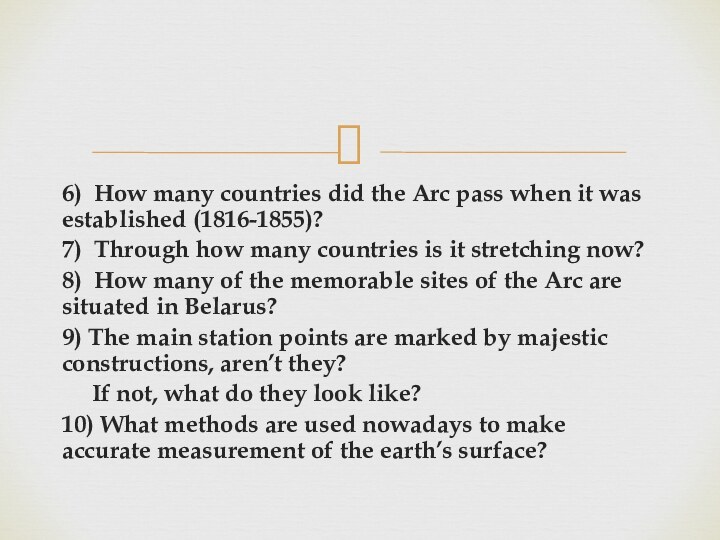meridian -
slab -
Give one word which means the same
geodesy
collaboration
accurate
longitude
plaque, plate
FindSlide.org - это сайт презентаций, докладов, шаблонов в формате PowerPoint.
Email: Нажмите что бы посмотреть






















Give one word which means the same
geodesy
collaboration
accurate
longitude
plaque, plate
Give one word which means the same
map
triangle
arc
cairn
geodesy
triangulation
accurate
geodetic
memorable
scientific
triangle, triangular
Nowadays the Arc of 34 memorable sites is stretching through 10 countries:
History
The Importance of the Arc
From triangulation to satellite-based measurement
Answer the questions